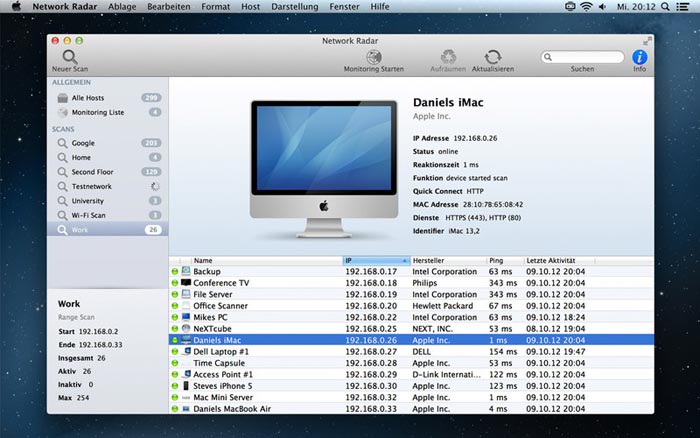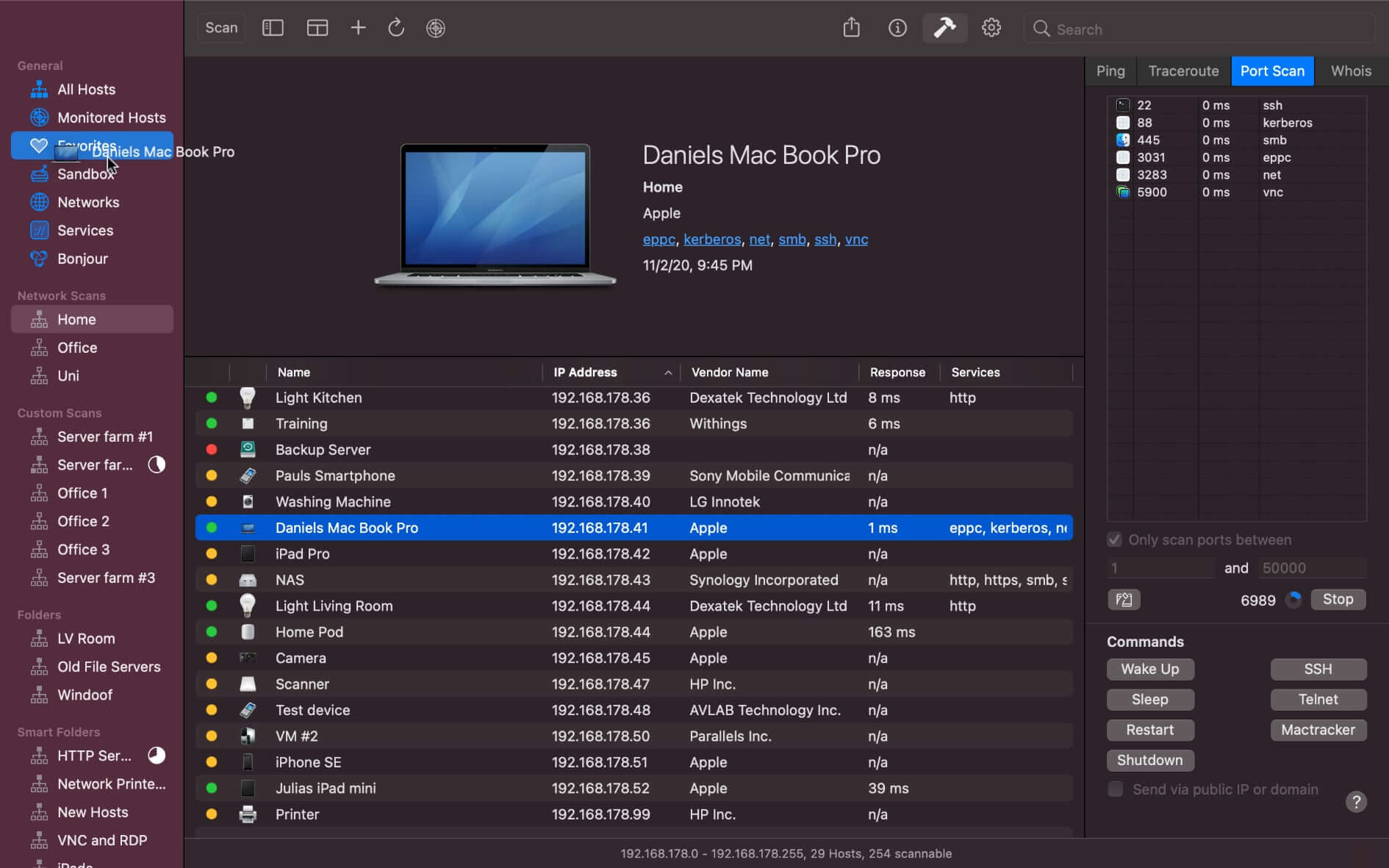

Wireless network radar software#
You can also use Wi-Fi scanning software to discover areas in your facility with a weak Wi-Fi signal. Using a Wi-Fi network analyzer for consistent Wi-Fi scanning helps you collect data and identify problems and indicate potential solutions, such as switching to another channel to reduce congestion. Wi-Fi signals are constantly changing, and small changes in the network can have massive effects on the overall connection uptime. A wireless network analyzer can help you maintain connection quality, which can be vital for numerous business needs and performance metrics. In simple terms, a Wi-Fi analyzer or scanner gathers information about access points and channels on your network and displays it in an easy-to-understand, visually accessible way. The Wi-Fi analyzer then examines the spectrum to view networks, their channels, and signal strength. Most Wi-Fi network analyzers work in a similar way, in which you can choose a wireless spectrum to examine, such as 2.4GHz or 5GHz.

Netflix looking to hire 'Chaos Engineer'.Namifying has gotten out of controlify.Patent issued for filming a yoga class seems a stretch.Google Internet balloon drops in on farmer.1987: Steve Jobs explains the mouse to Playboy."What do I do if my Internet pipes freeze?".You can follow me on Twitter here and on Google+ here. And, if you’d like to receive Buzzblog via e-mail newsletter, here’s where to sign up. Here are a few more recent buzzblog items. TPC is used to adapt the transmission power of a radio based on regulatory requirements and range information. The networking experts on Reddit assured the fellow that he is correct.Īnd it’s not a bug it’s a feature, as Cisco explains here (.pdf):ĭFS is the process of detecting radar signals that must be protected against interference from 5.0 GHz (802.11a/h) radios, and upon detection switching the operating frequency of the 5.0 GHz (802.11a/h) radio to one that is not interfering with the radar systems. Is my analysis correct? Is this what really happened?” Even the packet errors on the switch which I assumed were due to wireless drops during transmission. Removed them from the channels, saved changes, and all aforementioned problems have disappeared. Sure enough, our controller was enabled on all of these regulated channels. “After a few minutes of searching, I learned all about DFS channels and radar interference. Now in the logs, corresponding with the outages, a new event appeared: ‘Radar detected on channel’ We upped the heartbeat to 20 before rebootstrapping. “Aruba tells me this is due to network congestion, misconfiguration, cabling, etc.

The first log from one of the APs said "Missed 8 heartbeats. “I then started looking at the Aruba logs, and started to put the pieces together. The day I plotted them (based off of timestamps of events) they were almost in perfect order from North to South. “After hours of digging, cable checking, reading cisco logs, a day came where I decided to plot all of the APs having problems. Cisco switches showed packet errors, so that's where I started. They would intermittently lose network access (and generate Nagios alerts) only when school was in session, and only at one school.our highest wireless utilization point across the district.
I have been chasing a problem with a few of our Aruba Ap105 access points for a few weeks now. “So, I'm still trying to wrap my head around what happened this morning.


 0 kommentar(er)
0 kommentar(er)
